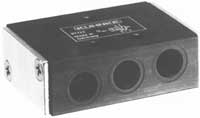Common Pneumatic Valve Types
Pneumatic valves, for many, are necessary components that are tasked with controlling the rate, pressure, and the total amount of air moving through a pneumatic system. Although these valves are small, they have a significant impact on how systems perform. A pneumatic control system is dependent upon the force of compressed air to transmit power. Without pneumatic valves and other pneumatic controls, these systems would not be able to function. Pneumatic control systems are found in a wide abundance of industrial applications, which include pneumatic pressure power tools and diesel engines.

To meet the vast demands of different businesses and industries, there are many various pneumatic valves that each have their characteristics (pros/cons). Knowing the difference between types can help you to make a smart decision about your system.
The two most common valves include:
A two-way directional valve can pass air in two separate directions. This is done through ports that can be opened and closed. When a valve port is closed, no air can flow through. Once you open the ports, air moves from one port to the next (in the opposite direction).
A three-way directional valve is built with three ports (each port serves a different function). The first port connects the valve to the actuator. The second port connects to an air-flow system. The last port is considered and exhaust exit.
For more information on different valve types, you should not hesitate to give our team a call.
Pneumatic Valves
- Common Functions of Pneumatic Valves
Pneumatic systems are often used because of all the benefits they offer to their users. The applications of these systems are very extensive. Below, we will go over common uses for pneumatic systems.
- Why Pneumatic Systems are Essential for Modern Automation
- Tips for Effectively Using Pneumatic Controls


- Ellis/Kuhnke Controls
132 Lewis Street Unit A-2, Eatontown, N.J. 07724
Phone: 1-800-221-0714
Fax: 732-291-8154
Email: Info@ekci.com
- Home Pneumatic Controls Technical Info CAD Drawings Contact Us Pneumatic Timers Blog Site Map
